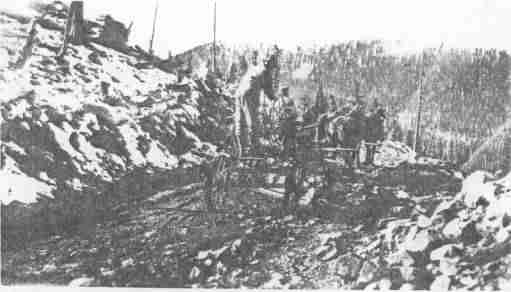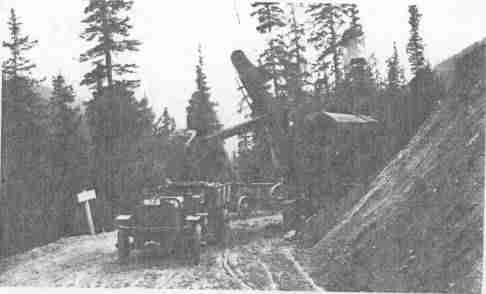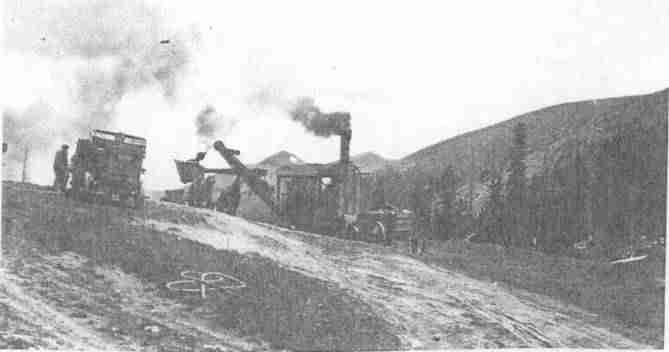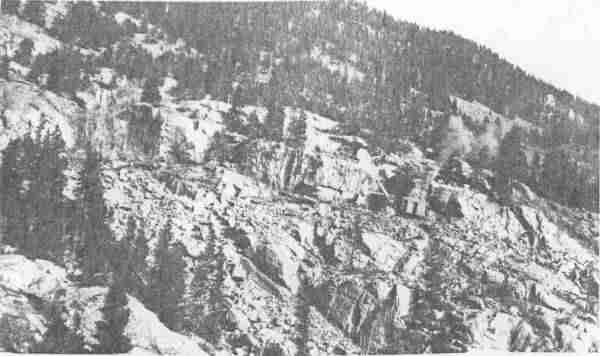| << Previous | Contents | Next >> |
The Trailblazers
Trailblazers of District 3
By
Dan Harrington
In response to your request for my memoirs as a pioneer in our Direct Federal Highway Development, I am flattered. I do not lay claim to this distinction inasmuch as I did not enter the organization until 1930, some fourteen years after the real pioneers laid the cornerstone. I was, however, fortunate and grateful to have these trailblazers for my tutors during my early career. These men came to us from diverse fields of engineering. Some were transferred from the U.S. Forest Service; some from Public Works organizations; some from railroads; and others from the construction industry. Their combined expertise melded to create a most viable engineering organization.
History is made by men so it should follow that a recording of that history should give tribute to the progenitors. We in Public Roads were fortunate to have our share of legendary men who shaped our destiny into the foremost highway engineering organization on earth. Fortunately these men were dedicated engineers who were not willing to accept the precept "You can't get there from here." They made it their business to get there so others could follow.
For those of us who did follow they left a well blazed trail and a log of their findings. They were the type of men who, if requested to do so, could build a bridge to mars or sing a ten foot shaft to hell. The legacy they handed down to us became out specifications - which, in simple terms, are the abbreviated digest of all that generations of engineers have learned through experience and research. We had our fair share of these outstanding men in old District 3, which later became Region 9 and is now part of Region 8. Among these were J.S. Bright, A. E. Palen, A. V. Williamson, C. E. Learned, C. F. Capes, F. C. Hill, W. D. Ross, B. B. Hauser, L. A. Hamilton, W. H. Curwen, S. A. Wallace, G. F. Leslie, L. F. Copeland, H. P. Martin, .A. O. Stinson, R. S. Corlew, P. A. Bean, W. J. Keller, W. L. Lafferty, J. D. Slye, W. M Jeffrey and R. H. Naylor. In the twenties they were joined by such men as B. W. Matteson, H. E. Dalton, W. H. Willesen, R. W. Darling, D. C. Macfarlane and Matt Bowman. They were supported by a great clerical staff of dedicated women, among whom were Irma Edwards, Ada Bixler, Eva Gay, Julie McDonald, Farra Cason, Helen Linn, and Louise Reichen.
Great stories could be written about these men and their deeds. To illustrate, I will brief the career of one man - Clyde E. Learned. He was a native of Massachusetts and a civil engineer. He came to Public Roads from the New York State Canal Authority. He was sent to District 3 as an expert on concrete paving to indoctrinate the emerging State Highway Departments in the construction of concrete pavements. This done, he stayed on to pioneer highway development through the rugged Continental Divide. At that time this great mountain barrier was where roads ended and trails began. A few primitive roads did penetrate this barrier to afford freighting of goods and railheads to the east. With the advent of the automobile and growing demand for mobility after World War I. these primitive roads were no longer acceptable. Clyde accepted the challenge and selected jointly with the Forest Service and the Colorado State Highway Department the construction of a major east-west road across the Divide westerly from Denver as first objective. For route selection he made the reconnaissance on foot and horseback. From his findings, he selected a crossing through Berthoud Pass, elevation 11,315 feet, as most feasible. This was the route chosen by Captain Berthoud in 1863 for a military crossing. This old military road had been subsequently improved to a 10-foot width as a toll road, known as the Midland Trail. To implement, his location crew established a line from the town of Empire on the east some 30 miles through the Pass and down the Fraser River drainage to the town of Fraser in Middle Park. He established controls for this survey, a maximum grade of six percent with curvature of 100-foot radios and that to be limited to switchbacks. A feasible line to these standards was established, in contrast with the Midland Trail which had tortuous alignment and grades ranging to 24 percent. Under his supervision the project was designed to afford a top finished width of 16 feet with widening for curvature. His estimate to build the project was $505,500.00.
In December 1919, funds in the amount of $220,000.00 were allotted to construct 9.37 miles - comprising the two steepest links on both sides of the Pass. His next step was to advertise for bids. There were no takers except for one optimistic quotation for $325,000.00. The project was beyond the capability of the flatland contractors who relied on men and miles using fresno, Mormon scrapers, rooter plows, dump wagons, picks, shovels and a mechanical device called a wheelbarrow.
Clyde was not thwarted - he canvassed the Army for World War I surplus military equipment. Through this means he obtained two ¾ c.y. Osgood steam shovels mounted on traction wheels and six 2-ton trucks. He was then ready to tackle the mountain.
It was a grand sight to see the shovels belching smoke and fire as they clawed their way up the mountain. The Denver newspapers ridiculed the project as "Learned's Folly" and predicted that he would end up setting the forest afire. He did - twice - but his crews put them out and kept going. The newspaper articles generated strings of assorted vehicles, loaded with sightseers on weekends. They proved more damaging to the landscape - and the work - than the steam shovels. He solved this problem by blocking them off at Empire. He used local materials - logs and stone - for building bridges and cribbing.
He kept on going until late 1923, at which time he ran out of money. The $220,000.00 constructed 16.5 miles - from Berthoud Falls to the present site of West Portal. Not only did he build twice the mileage anticipated but he increased the standard to afford 20'-24' top finished width. Most important, he revolutionized mountain highway construction by using power equipment.
Through this pilot project, contractors were encouraged to mechanize and bid mountain construction projects. In this manner he developed the Forest Highway System throughout Wyoming, Colorado, South Dakota, and New Mexico. Beginning in 1926, he did the same thing on the National Park System. Trail Ridge Highway across Rocky Mountain National Park further attests to his ability as an engineer and administrator.
To ensure quality, longevity, betterments, and all-weather use of the highways he built, he organized and deployed maintenance and betterments crews of artisans to maintain and enhance them to afford maximum utilization of the recreational values of the roadsides. His keen interest in roadside development and preservation of the natural values is a legend among contractors, engineers, and conservationists. He recognized the need for year around travel through the mountains. To this end he pioneered snow removal, drift control, and avalanche control. Much of this work was done on Berthoud and Rabbit Ears Pass to make U.S. 40 the first transmountain-transcontinental highway to afford all year travel.
When we became involved in the construction of the Alcan highway, Clyde was drafted to head the logistic section. In this capacity he mobilized, scheduled, and transported men, equipment, contractors, and materials to construct the southern section.
From the close of World War II until his retirement in 1954, he served with distinction as Deputy Regional Engineer for Region 9 - now Region 8. During this period, he made a lasting impact in the Federal-aid development in our constituent States.
Although this written saga on Clyde Learned is short, his contributions to this country, his profession, and to the men he trained are forever. He was a real man - tough, kind, fair, honest, resourceful, and a leader among men. I am proud that he chose me to carry on the great work that he nurtured.
If an epitaph is to be written for this great man I suggest it read "HE LENT A HAND."

Fine grading -- two horses and plow (T. H. & P. Construction Company)

Modern road building -- circa 1921

Topping out-shovel at summit of Berthoud Pass

Learned's Folly -- Chewing up a mountain

